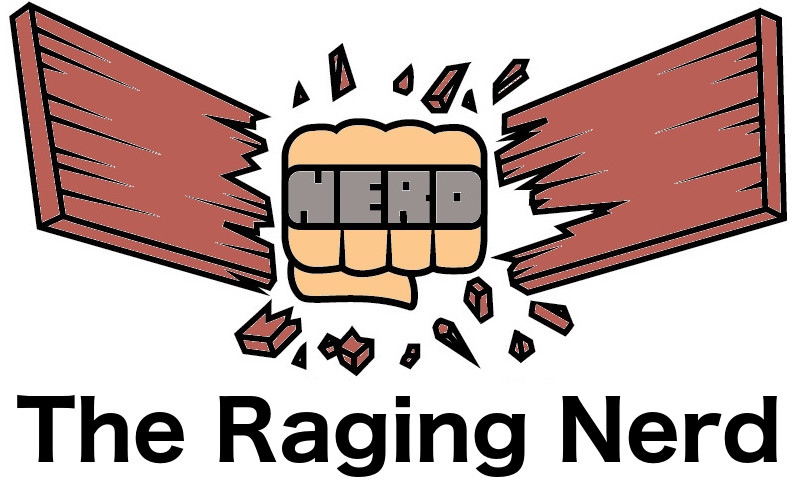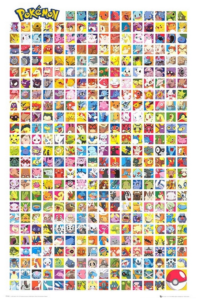Four Pokemon You Can Use On Mewtwo in Red/Blue
We all remember the old Pokemon games, Red and Blue. Later on, long before Gold and Silver shook things up with many new species, Yellow added to the fun by taking the ordinary model and adding many new features, such as a Pikachu that would follow you around. Although the balancing wasn’t perfect, the original Pokemon games were a unique experience and for many of us, were our first introduction to Nintendo. The Pokemon games are the reason so many people still wear Nintendo t shirts, or at least, one of the reasons. We all had a blast playing Pokemon and putting Pokemon posters on our walls..
But then there’s that little rascal, Mewtwo! It was obviously a lot of fun to play Mewtwo when you’re the one knocking enemy Pokemon around with zero effort. But suddenly, when you run into another player who is kicking your butt with their Mewtwo, it’s not fun anymore. The only real option is to pull out your own Mewtwo and go head-to-head, and that just gets boring after a while. So what are some non-Mewtwo Pokemon you can use to knock that sucker out? Is there any way to beat him without hauling out a long list of your own legendaries, or is he just invincible?
The first thing you could try is Parasect. I know what you’re thinking: “Parasect? That weak bug Pokemon? How in the world is he going to help me against Mewtwo?” Well, there is a specific moveset that you have to use. That moveset is as follows: substitute, spore, sword dance, mega drain. Start off by using spore to put Mewtwo to sleep. Then throw out a substitute and begin using sword dance to raise your attack. Finally, spam mega drain until big M2 bites the dust. The attack boost from sword dance, plus the bug-type bonus against psychics, ensures that mega drain will deal huge damage to Mewtwo. Even better, if Mewtwo wakes up and uses psychic to kill the substitute, you can just put him back to sleep with spore, which has a very high accuracy. On top of that, mega drain restores health to your parasect, so you can easily toss out another substitute once Mewtwo is sleeping again. If you can pull this off, there is nothing Mewtwo can do!The second thing you could try is Snorlax. The Snorlax moveset you want is amnesia, rest, headbutt, and selfdestruct. Simply use amnesia three times to begin with. This raises your special greatly so that Mewtwo’s psychic can’t knock you down. You can even rest and leave Snorlax out there for three rounds. His HP is so high he can weather three rounds of an angry Mewtwo, provided he has three amnesias under his belt. Then attack repeatedly with headbutt. Headbutt has the side effect of causing Mewtwo to flinch, which can open him up for another headbutt. Once Mewtwo’s hp is low enough, use selfdestruct for the KO.
Two final options are Dugtrio and Electrode. With Electrode, attack with thunderwave to paralyze Mewtwo, explosion to take a chunk from his HP, and then send out Snorlax. With Dugtrio, just use fissure repeatedly and hope for that one-hit KO.
George Lucas Returns!
Why is it such good news that George Lucas is returning to Star Wars? Why would it matter to the kind of person who watches all the movies and wears Star Wars t shirts? The reason is that George Lucas is the original force (or Force, if you will) behind the whole Star Wars franchise. He was the mastermind behind the original series, and his return triggers the hope for a return to form. With George Lucas back at the wheel, it is hoped that the original series, which lost its way a long time ago, will be back on top and ready to really inspire people and show true creativity in a way that the Disney-funded franchise did not.
Let’s rewind. George Lucas was the man behind the myth as far as Star Wars is concerned. The original creative genius behind the series was a man with very original ideas who was able to craft something the world had never seen. The Joycean, or perhaps Campbellian, genius behind the original Star Wars is something that could never be replicated by a committee or a focus group. It’s the kind of true creativity that nobody could replicate besides the original Jedi master himself.
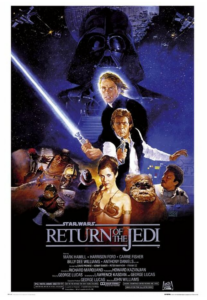 Then Lucas created the prequels, which weren’t as good. Now that nobody could tell George Lucas “no”, he was able to make all the self-indulgent creative mistakes he was prevented from making during the first trilogy. Because he was famous and well-known now, nobody dared to tell him “no”. Perhaps he surrounded himself with suck-ups, or perhaps it was mere happenstance, but George Lucas was now able to do whatever he wanted, and it ended up with an absolute mess of a prequel trilogy. This finally ended when he sold the franchise to Disney. This, it was thought, might repair the series.
Then Lucas created the prequels, which weren’t as good. Now that nobody could tell George Lucas “no”, he was able to make all the self-indulgent creative mistakes he was prevented from making during the first trilogy. Because he was famous and well-known now, nobody dared to tell him “no”. Perhaps he surrounded himself with suck-ups, or perhaps it was mere happenstance, but George Lucas was now able to do whatever he wanted, and it ended up with an absolute mess of a prequel trilogy. This finally ended when he sold the franchise to Disney. This, it was thought, might repair the series.
But that ended poorly, too. Once Disney got ahold of the series, it became democratized, corporatized, commodified, fed through focus groups and committees, a creature of bureaucracy. It was now a product, and not a product in the sense of a creation by an individual. Star Wars became something mass-produced, and that killed its appeal. It was one more politically correct franchise aiming to appeal to the lowest common denominator in a country with no unity and no common culture. It was a product for the masses, with no identity and no sense of exclusion or boundaries. It was simply a creative travesty.
With George Lucas back at the helm, we dare to hope for something better. We dare to hope that his self-indulgent tendencies have been fully attenuated, and that he will serve as a guide to take Star Wars back to creative validity. We want to see something new and exciting, not self-indulgent like the prequels and not a corporate mass-production like the latest films, but the true product of a creative mind. We want to see if George Lucas still has it in him. Let’s hope for the best. May the Force be with him.
Is Star Wars Actually Fantasy?
I once heard someone, a favorite author of mine on Quora, make an observation like this: “Sci-fi is about ideas, and fantasy is about spirituality.” This left me scratching my head at first. How in the world is something like Lord of the Rings about spirituality? And how is something like Star Trek about ideas? But the more I thought about it, the more I began to think that that guy was actually right. Sci-fi really is about ideas, and fantasy really is about spirituality. I thought long and hard, and I eventually came to a surprising conclusion: Star Wars is really fantasy, not sci-fi. The kind of guy who wears a Star Wars t shirt might disagree, but hear me out.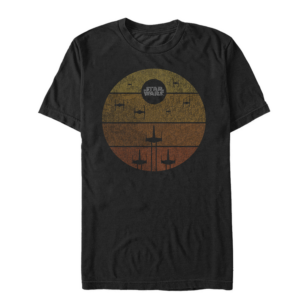
We all know that Tolkien is fantasy, right? And The Lord of the Rings really is about Tolkien’s spirituality. Tolkien was very Christian (he was Roman Catholic and devout) but also very pagan, in a way. There is something very deeply Norse about Tolkien’s worldview; his outlook on life has some of the pathos and tragedy of Norse mythology, but it’s wrapped in the hope (in fact, the certainty) of an ultimate triumph that comes from his Christian beliefs. CS Lewis is even more obvious. Michael Ende’s Neverending Story is an expression of Anthroposophy, which was a spiritual philosophy that he believed in.
Sci-fi is about ideas. Star Trek is the idea of utopia and how we can move closer to it. Dune is the idea of human potential being pushed to its limit. Michael Crichton’s books are about the abuse of technology and all the ways that that can become a problem. He was especially interested in the abuses of biotech. The difference is that sci-fi is much more analytical, much more rational and deductive, whereas fantasy is much more emotional and mythological. Fantasy can contain ideas, yes, but in a much more “blurry” way, not as clean cut or logical.
These two genres can be disguised as one another. What I mean is, there are a lot of so-called “fantasy” that is actually sci-fi, and a lot of so-called “sci-fi” that is actually fantasy. If you’re reading a book that looks like fantasy, but where there are definite rules of magic and systems in place, and where wizards do “research” to further their magic, then you’re looking at sci-fi disguised as fantasy. Those wizards are just physicists in pointy hats. Similarly, just as there are some fantasy franchises that are just disguised sci-fi, there are some sci-fi franchises that are actually disguised fantasy.
One of those is… Star Wars! I said earlier that fantasy is an expression of a person’s spirituality. I hazard a guess that George Lucas has a very particular view on this kind of thing. I don’t know anything about the guy, but if what I said about fantasy is true, then George Lucas probably has a very particular kind of spirituality to him, and that’s what is coming up in Star Wars. The Force almost seems like a concept out of Eastern religion! There is something vaguely Hindu or Buddhist about the themes expressed in Star Wars. So since fantasy is an expression of a person’s spirituality, I think it’s safe to say that Star Wars is fantasy.
The Stormtrooper Effect
If you’ve ever watched Star Wars, you may have noticed the the supposedly “feared” Imperial Stormtroopers are lousy shots. This is something that people in cinema of continuously commented on. You can look anywhere on the internet and see people complaining and joking about this. On forums and other websites, everybody cracks jokes about the Stormtroopers being unable to hit the broad side of a barn. This has become legendary, a trope, so to speak. In fact, at this point, it even has a name: the Stormtrooper Effect. The Stormtrooper Effect is not limited to just Star Wars, but is present in many other franchises.
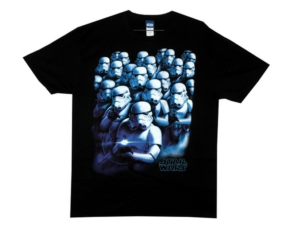 But why? Why would something so strange and ridiculous be so common? You’d think that such an unrealistic trope would have no place in most media, because if the audience doesn’t buy it, it won’t make any money. However, there’s more to it than that. You see, the Stormtrooper Effect is actually inevitable in any media where the heroes are fighting against hordes of mooks. Because if the mooks all had good aim, then the heroes would be dead at the beginning, and then there’d be no story. Not only is this not unique to Star Wars, it’s downright ubiquitous!
But why? Why would something so strange and ridiculous be so common? You’d think that such an unrealistic trope would have no place in most media, because if the audience doesn’t buy it, it won’t make any money. However, there’s more to it than that. You see, the Stormtrooper Effect is actually inevitable in any media where the heroes are fighting against hordes of mooks. Because if the mooks all had good aim, then the heroes would be dead at the beginning, and then there’d be no story. Not only is this not unique to Star Wars, it’s downright ubiquitous!
On top of that, you have to remember that the Stormtrooper Effect is not so unrealistic. In fact, it’s very, very realistic. Most soldiers who fire their weapons in war never actually hit an enemy. It takes hundreds of rounds fired on average for one kill to be scored. This is because the Stormtrooper Effect is actually a realistic depiction of how hard it is to hit a moving, intelligent human target who doesn’t want to be shot. If anything, the lack of realism flows in the other direction: it’s the heroes who have the unrealistic aim. Their aim is unrealistically good!
If you’re a big enough fan of the series to wear Star Wars t shirts, then you can probably point out some places where the Stormtrooper Effect doesn’t apply. For example, in the prequels, whenever a main character has a lightsaber that they can use to deflect blaster shots, the Stormtrooper Effect is no longer a problem. Now that the main character has a lightsaber to protect them and make sure they make it to the end (since they’re indispensable to the plot) the Stormtrooper Effect is no longer needed. It makes sense, and also provides a sense of realism because it shows that Stormtroopers do sometimes hit their targets, even if that target is a Jedi who can deflect the shots. That’s what you see on a Star Wars t shirt.
So the Stormtrooper Effect is ubiquitous because it has to be, but you can see some places where it doesn’t apply. Generally speaking, it helps to have some variety in fiction. Having the bad guys just miss is a default option for the writers. In order to mix things up a little, it helps to have other reasons for the heroes not to get shot.
What Is The Best Party Game?
Everybody has their own opinions about what constitutes a good party game or what games are best for parties and family gatherings. I think that if you’re just at a default party, with no especial theme or demographic, then the best board game for parties is Trivial Pursuit. There are a few things that make Trivial Pursuit stand out. Of course, everyone has their own specific tastes, but here’s why I think that Trivial Pursuit is the best. You can disagree with me if you want, but after reading this, you can not possibly deny that Trivial Pursuit is a fantastic party game. You might even like it enough to wear a Trivial Pursuit t-shirt!
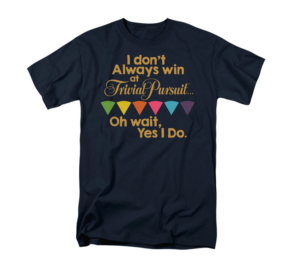 First of all, Trivial Pursuit can be played using teams or single players. There are several colors that can be used, so that makes it possible to have up to six people, each with their own colors. If you’re willing to have teams, then you can have up to twelve people, with each color corresponding to a pair of persons. Or, if you only have six people, you can just have three teams of two.
First of all, Trivial Pursuit can be played using teams or single players. There are several colors that can be used, so that makes it possible to have up to six people, each with their own colors. If you’re willing to have teams, then you can have up to twelve people, with each color corresponding to a pair of persons. Or, if you only have six people, you can just have three teams of two.
Second of all, Trivial Pursuit is knowledge-based. It’s not about skill at playing a particular game, like Splendor or Settlers of Catan or Carrcassonne. It’s also not about speed or how fast you can grab a piece or react to a bell ringing. Instead, Trivial Pursuit is about knowledge. You have to know the answers to the questions. And more importantly, there are enough different areas of knowledge to keep any single player from dominating the game. Even the egghead in your family will probably not excel at the sports section!
Third, Trivial Pursuit is very replayable. Unlike system-based strategy board games, such as Secret Hitler or Arkham Horror, Trivial Pursuit cannot really be “gamed”. You simply know the facts or you don’t. And since the game comes with so many cards, it’s always replayable.
